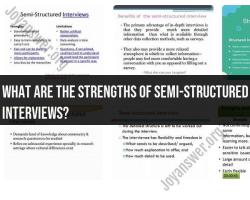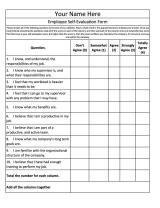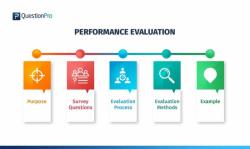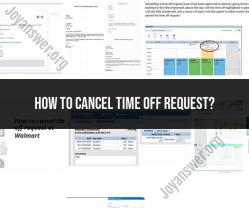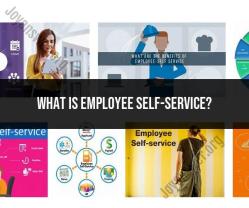What are the external factors affecting HRM?
Human Resource Management (HRM) in an organization is influenced by a variety of external factors that impact how HR practices are developed and implemented. These external factors can significantly affect an organization's ability to attract, retain, and manage its workforce effectively. Here are some of the key external factors affecting HRM:
Economic Conditions: The state of the economy, including factors like economic growth, inflation, and unemployment rates, can affect an organization's HRM strategies. In times of economic downturn, organizations may face budget constraints and have to make decisions related to layoffs, cost-cutting, or freezes on hiring.
Labor Market Trends: Labor market conditions, such as the availability of skilled talent, wage levels, and competition for talent, can impact an organization's ability to recruit and retain employees. A tight labor market may require higher compensation and more competitive benefits packages.
Legal and Regulatory Environment: Labor laws, employment regulations, and government policies have a significant impact on HRM. Compliance with laws related to labor rights, workplace safety, discrimination, and wage and hour regulations is crucial.
Technological Advancements: Rapid technological changes can affect job roles and workforce skills. HRM needs to adapt by offering training and development programs to ensure employees have the necessary digital skills and competencies.
Globalization: Organizations operating in a global context must consider cross-border HR challenges, including managing a diverse workforce, adhering to international labor laws, and addressing cultural differences.
Demographic Shifts: Changes in the demographics of the workforce, such as an aging workforce or a growing millennial workforce, can influence HRM practices, including succession planning, training, and diversity initiatives.
Social and Cultural Factors: Social trends, values, and cultural norms can affect HRM strategies related to diversity and inclusion, work-life balance, and employee engagement.
Political Environment: Political stability and government policies can impact HRM practices, particularly in regions where political changes or instability affect labor laws and regulations.
Technological Tools: The adoption of HR technology tools, such as HR software, artificial intelligence, and data analytics, can enhance HRM processes but also require HR professionals to adapt and learn new skills.
Competitive Environment: An organization's industry and competitive landscape can affect HRM strategies for talent acquisition, employee retention, and compensation packages.
Environmental Sustainability: Increasing emphasis on sustainability and corporate social responsibility may drive HRM initiatives related to environmentally friendly workplace practices, ethical sourcing, and employee engagement in sustainability efforts.
Market and Customer Dynamics: Changes in customer preferences and market demands can influence HRM practices, particularly in industries where customer service and innovation are critical.
Labor Unions: The presence and influence of labor unions can impact labor relations and HRM strategies, especially in unionized industries.
It's important for HR professionals and organizations to continually monitor these external factors and adapt their HRM practices and strategies to align with the evolving external environment. A proactive approach to HRM can help organizations navigate challenges and leverage opportunities to effectively manage their workforce.
External Factors in HRM: Understanding Their Influence
External factors are those that influence an organization from outside its boundaries. They can have a significant impact on human resource management (HRM), as they can affect the availability of talent, the skills required for employees to be successful, and the cost of doing business.
Some of the most important external factors that affect HRM include:
- Economic conditions: The economic climate can have a major impact on HRM. For example, in a recession, companies may need to lay off employees or reduce salaries. Conversely, in a booming economy, companies may have difficulty finding and retaining qualified employees.
- Technological advancements: New technologies can also have a significant impact on HRM. For example, the rise of automation has led to a decline in the demand for certain types of jobs. Conversely, new technologies have also created new job opportunities.
- Demographic changes: Demographic changes, such as the aging population and the increasing diversity of the workforce, are also important external factors that affect HRM. For example, companies may need to adapt their training and development programs to meet the needs of an older workforce.
- Legal and regulatory environment: The legal and regulatory environment can also have a significant impact on HRM. For example, companies must comply with a variety of laws and regulations related to employment, such as those governing minimum wage, overtime pay, and discrimination.
Human Resource Management and External Factors: A Complex Relationship
The relationship between HRM and external factors is complex. External factors can both constrain and enable HRM practices. For example, economic conditions may constrain a company's ability to hire new employees or provide training to existing employees. However, technological advancements can enable companies to use new methods for recruiting, training, and managing employees.
HRM Challenges: Examining External Forces Affecting the Field
HRM professionals face a number of challenges in managing the impact of external factors. One challenge is that external factors are often unpredictable and difficult to control. For example, it is difficult to predict when a recession will occur or how new technologies will impact the workforce.
Another challenge is that external factors can have a significant impact on the cost of doing business. For example, companies may need to invest in new training and development programs to keep up with technological advancements. This can be costly, especially for small businesses.
Despite these challenges, HRM professionals can take a number of steps to manage the impact of external factors. One important step is to stay informed about the latest trends and developments in the external environment. This will help HRM professionals to anticipate changes and develop strategies to mitigate their impact.
Another important step is to be flexible and adaptable. HRM professionals need to be willing to adjust their practices in response to changes in the external environment. For example, companies may need to change their recruiting and training practices to attract and retain employees in a competitive job market.
Finally, HRM professionals need to be able to communicate effectively with senior management about the impact of external factors on the workforce. This is important so that senior management can make informed decisions about how to allocate resources and support HRM initiatives.
Overall, external factors have a significant impact on HRM. HRM professionals need to be aware of the latest trends and developments in the external environment, be flexible and adaptable, and communicate effectively with senior management in order to manage the impact of external factors on the workforce.


